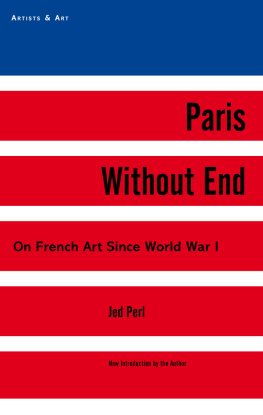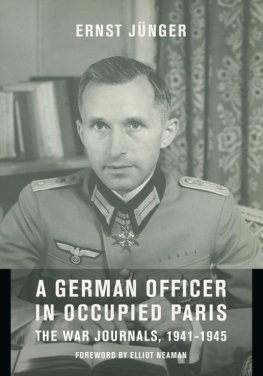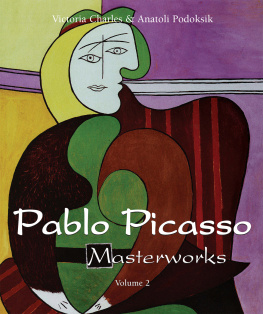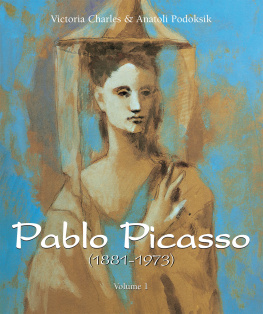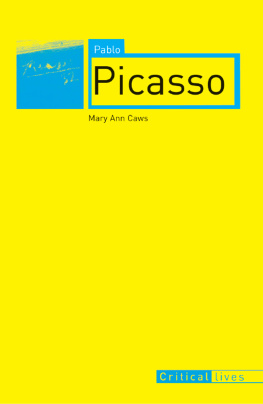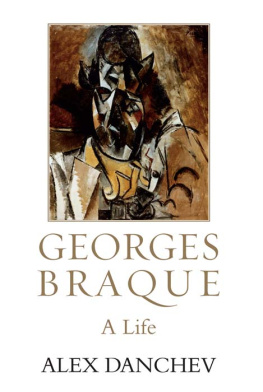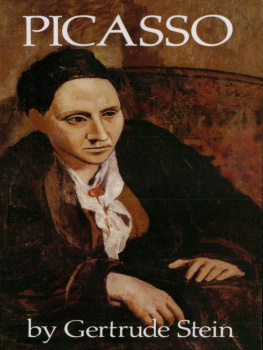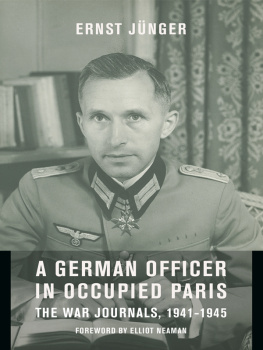Also by Jed Perl
Gallery Going
Eyewitness
New Art City
Antoines Alphabet
Magicians & Charlatans
Copyright 1988, 2014 by Jed Perl
The quoted materials in the text are from the following works: From Functions of Painting , by Fernand Lger, translated by Alexandra Anderson, Viking Press, 1973. From Fernand Lger , by Peter de Francia, Yale University Press, 1983. From Picassos Mask , by Andr Malraux, Holt, Rinehart & Winston, 1976. From The Left Bank , by Herbert Lottman, Houghton Mifflin, 1982. From The New Art of Color: The Writing of Robert & Sonia Delaunay , Viking Press, 1978. From Arp: 1886-1966 , Jane Hancock and Stephanie Poley, editors, Minneapolis Institute of Arts, 1987. From Every Force Evolves a Form , by Guy Davenport, North Point Press, 1987. From Ada or Ardor: A Family Chronicle , by Vladimir Nabokov, McGraw-Hill, 1980.
All rights reserved. No part of this book may be reproduced in any manner without the express written consent of the publisher, except in the case of brief excerpts in critical reviews or articles. All inquiries should be addressed to Arcade Publishing, 307 West 36th Street, 11th Floor, New York, NY 10018.
All inquiries should be addressed to Arcade Publishing, 307 West 36th Street, 11th Floor, New York, NY 10018.
Arcade Publishing books may be purchased in bulk at special discounts for sales promotion, corporate gifts, fund-raising, or educational purposes. Special editions can also be created to specifications. For details, contact the Special Sales Department, Arcade Publishing, 307 West 36th Street, 11th Floor, New York, NY 10018 or .
Arcade Publishing and Artists & Art are registered trademarks of Skyhorse Publishing, Inc., a Delaware corporation.
Visit our website at www.arcadepub.com.
10 9 8 7 6 5 4 3 2 1
Library of Congress Cataloging-in-Publication Data is available on file.
Cover design by Elena Giavaldi
ISBN: 978-1-61145-900-5
E-Book ISBN: 978-1-62872-404-2
Printed in China
TO DEBORAH
Contents
Paris Without End
The School of Paris Revisited
Paris Without End was conceived as a love letter. I wrote as a young American art critic who was enormously enthusiastic about aspects of twentieth-century European art that I believed were too little appreciated or understood. I worked out of passion. I aimed to exalt. I was frustrated that Matisses boldly modeled odalisques of the 1920s and Picassos brusque final paintings and a number of other achievements of the old masters of modern art were routinely sidelined or dismissed. And I was furious that what I believed were some of the essential achievements of recent French painting, especially Jean Hlions scenes of modern life, had failed to find the audience they deserved. Paris Without End was a cry, but not exactly a cry in the wilderness. I knew that my feelings were shared by more than a few of my contemporaries. And if my love letter was addressed to nine great artists of whom only one, Balthus, was still alive, I was also thinking of Paris Without End as a letter addressed to the contemporary artists who felt much as I did and who in many cases had inspired my own feelings.
Twenty-five yearsthe length of time since Paris Without End was first publishedis both a very long time and a very short time in the story of art. It is enough time for everything to change and for nothing at all to change. My book grew out of a desire for changefor a more expansive understanding of the artists who had flourished in France in the decades after World War I. But if I was involved with a transformation of taste that meant going back to the future, the backward glance was often fueled by events that were thrillingly immediate, very much part of the excitement of the present. Especially inspiring for members of my baby-boomer generation was a growing awareness of the riches of Picassos later paintings, drawings, and prints. An older generation, at least some members of that generation in the United States, had convinced themselves and many of the rest of us that Picassos work had degenerated into kitsch or close to it in the 1950s and 1960s. As late as 1980, I remember the editor of a well-known art magazine asking me whether I thought I could make a strong case for Picassos final paintings. Since then there has been an extraordinary growth in the prestige of those works, a reversal of fortune that culminated in the summer of 2009 with an exhibition at the Gagosian Gallery in New YorkPicasso: Mosqueteros, organized by Picasso biographer John Richardsonwhich electrified even Manhattans most jaded gallerygoers.
Along with some of my artist friends in the 1970s and 1980s, I was fed up with the view of twentieth-century art as a perpetual process of reduction. We reveled in any discovery that complicated the story. Aside from a couple of paintings that were routinely exhibited at the Museum of Modern Art, Balthus had been little more than a rumor for us before the exhibition of his new paintings at the Pierre Matisse Gallery in 1977. Since the gallery was not especially largeindeed it was tiny by the standards of blue chip galleries todaythe steady stream of visitors to that unforgettable exhibition always felt like a crowd. Standing shoulder to shoulder with all those other people, it was by no means easy to get a clear view of the two portraits of the artists wife, Setsuko, in which Balthus amazed and enchanted us with his reconsideration of the meaning of Asian art for the Western imagination. I had never before been present when a masterpiece first emerged. And here was a show that contained two, three, maybe more works that were surely going to live forever. I will not detail all the signal events of those yearssome are described in the pages that followbut I do want to salute the exquisite show of work by Raoul Dufy presented in New York in 1984 by Holly Solomon, a gallerist whose taste I did not always agree with but who as a personality had precisely the mischievous magic necessary to perceive Dufys then (and indeed even now) inadequately appreciated genius.
If I were to spare others the trouble of placing Paris Without End in its historical context, I would say that it had to be described as a work of postmodern revisionism. Among the events I was responding to was the epochal exhibition of Matisses work from the early years in Nice, at the National Gallery in Washington in 1986-87. That show focused on a period in Matisses work when he was often pursuing a naturalistic vision that many arbiters of tasteespecially Alfred H. Barr, Jr., the founding director of the Museum of Modern Art and a key figure for the understanding of Matisse in the United Stateshad regarded as a retreat from the challenge of simplifying and abstracting nature. Matisse: The Early Years in Nice ought to have shaken the standard interpretations of an essential modern master. But if the thrust of the show was revisionistand this was a revisionism of which I heartily approvedeven at the time I wondered whether the curators involved had really grasped what it meant to have awoken in what I referred to with a certain irony as the morning after modernism. The magnificently modeled figures that Matisse painted at the time are even now not regularly shown at the Museum of Modern Art, although the museum owns at least a couple of choice examples. Matisse is still seen as most serious when his work is most pared-down, simplified, reduced.
Postmodernism of course has had as many faces as modernism itself. And if there was a thesis that fueled Paris Without End , it was that much of what we think of as postmoderna preoccupation with representation, narrative, symbol, historical allusion, literary association, and a host of other complicating factorswas for the most part already contained within modernism. My goal was not to deny the centrality of formal values, but rather to argue that a much wider range of factors could affect the artists form-giving powers. Paris Without End was driven by the conviction that art does not have a linear progress. The same artist, so I believe, can at different times experiment with different kinds of simplification and complication and different levels of illusion and allusion. In the 1980s, I thought this was an argument that could be pursued in a spirit of sober and strenuous debate. But in retrospect I can see that I was overly optimistic. If my goal was to expand the range of qualities that were embraced within our concept of quality, what I did not sufficiently take into account was the extent to which all concepts of quality were under attack. While the old guard maintained an overly prescriptive idea of what was best in Picasso and Matisse, the trendsetters were becoming uneasy with any judgment that might suggest some underlying or overarching system of values. Achievements once dismissed out of handDe Chiricos late Baroque self-portraits come to mindwere embraced not because they happened to have some inherent and previously misunderstood value, but simply because praising them was a way of shaking up or at least ruffling conventional taste.

